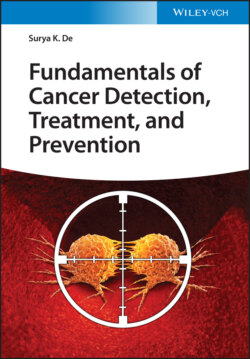Читать книгу Fundamentals of Cancer Detection, Treatment, and Prevention - Surya K. De - Страница 70
2.8.2 Alcohol
ОглавлениеAccording to the American Institute for Cancer Research, there is now strong evidence that drinking alcohol increases the risk of developing several forms of cancer, including those of the mouth, pharynx, larynx, esophagus, liver, breast, stomach, and colorectum [19–35]. Drinking even small amounts regularly was shown to increase the risk of specific cancers, such as breast (Figure 2.6).
Figure 2.6 Drinking alcohol causes cancer.
Source: LIGHTFIELD STUDIOS/Adobe Stock.
For cancer prevention, it is suggested that alcohol consumption be eliminated. However, since alcohol has also been shown to have certain health benefits, including reducing heart disease and type 2 diabetes, guidelines have been modified to drinking two alcoholic beverages per day for men, and one per day for women.
Once in the body, ethanol is easily oxidized to acetaldehyde. DNA bases such as purine and pyrimidine are nucleophiles and react with acetaldehyde resulting in DNA damage inside cells. Alcohol and its byproducts damage the liver leading to inflammation and scarring (cirrhosis). Though liver cells try to repair the damage, yet they can end up with mistakes in their DNA, which can lead to cancer (Figure 2.7).
Figure 2.7 Bodily long‐term effects of alcohol consumption.
